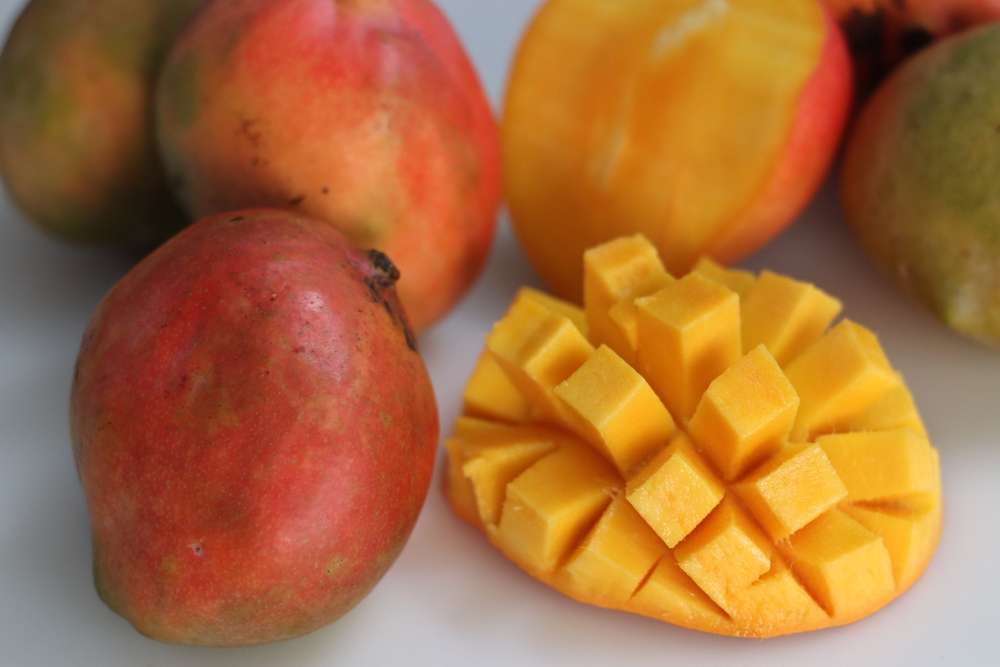What is a Honey Mango? This intriguing question often sparks the curiosity of fruit enthusiasts and food lovers alike. Honey mangoes, also known as Ataulfo or Champagne mangoes, are a true tropical treasure, offering a sweet taste of the tropics. In this article, we will take a deep dive into the world of honey mangoes, exploring their origins, unique characteristics, nutritional value, and versatile uses in the kitchen. Let’s embark on a journey to discover what makes the honey mango so special.
Origins and Cultivation
Honey mangoes have their roots in the heart of Mexico, where they have been cultivated for centuries. These mangoes are believed to have originated in the Chiapas region of southern Mexico. The variety is named after Ataulfo Morales Gordillo, a Mexican farmer who played a significant role in promoting and cultivating this particular mango variety.
Today, honey mangoes are not limited to Mexico; they are grown in various tropical and subtropical regions worldwide. Countries like Ecuador, Peru, Brazil, and the United States (particularly in Florida and California) have embraced the cultivation of these delicious mangoes. The ideal climate for honey mango cultivation includes warm weather and abundant sunshine, which contribute to their exceptional sweetness and flavor.
A Feast for the Senses
Honey mangoes are celebrated for their distinct characteristics that set them apart from other mango varieties:
Shape and Size: These mangoes are typically small and oval-shaped, measuring approximately 4 to 6 inches in length. Their petite form and slender profile make them easy to handle and a convenient choice for snacking.
Color: A ripe honey mango displays a vibrant golden-yellow hue. The skin is thin and smooth and may bear occasional wrinkles and small blemishes, which are entirely natural and do not affect the quality of the fruit.
Texture: The true magic of honey mangoes lies in their creamy, buttery flesh. They are often described as the creamiest of all mango varieties, making them a delightful choice for both eating fresh and incorporating into culinary creations.
Flavor: What truly makes honey mangoes exceptional is their incomparable flavor. They are renowned for their remarkable sweetness, characterized by honey-like undertones and a subtle tangy note. The name “Honey Mango” is a fitting testament to their extraordinary taste.
Seed: Honey mangoes feature a relatively small, flat seed, resulting in a higher proportion of delectable flesh compared to mango varieties with larger, oblong seeds.
Nutritional Benefits
Beyond their mouthwatering taste, honey mangoes offer a spectrum of nutritional benefits that make them a healthy choice.
Vitamins and Minerals: Honey mangoes are rich in essential vitamins, including vitamin C, vitamin A, and vitamin E. They also provide vital minerals such as potassium. Vitamin C supports the immune system, while vitamin A is crucial for skin and eye health. The presence of potassium contributes to maintaining healthy blood pressure.
Dietary Fiber: Honey mangoes are a valuable source of dietary fiber, promoting digestive health and providing a sensation of fullness. This makes them a satisfying and wholesome snack.
Antioxidants: These mangoes contain antioxidants like beta-carotene and quercetin, which help combat oxidative stress and reduce the risk of chronic diseases. Antioxidants play a vital role in overall well-being.
Low-Calorie Content: Despite their natural sweetness, Honey Mangoes are relatively low in calories, making them a guilt-free choice for those who are mindful of their calorie intake.
Culinary Versatility
Honey Mangoes are not only beloved for their fresh consumption but are also celebrated for their culinary adaptability. Here are some creative ways to incorporate these mangoes into your dishes:
Mango Salsa: Prepare a lively mango salsa by dicing Honey Mango, mixing it with red onion, jalapeño, cilantro, and a splash of lime juice. This versatile condiment pairs harmoniously with grilled chicken, fish, tacos, or as a vibrant topping for various dishes.
Mango Smoothies: Introduce Honey Mango chunks into your morning smoothie for a burst of natural sweetness and creaminess. They can also be combined with other fruits for a refreshing blend.
Mango Sorbet: Blend Honey Mangoes with yogurt or coconut milk to create a delightful mango sorbet. This frozen treat is a refreshing dessert option, especially on hot days.
Fruit Salad: Combine Honey Mango chunks with other tropical fruits such as pineapple, kiwi, and papaya to craft a tropical fruit salad that will transport your taste buds to an exotic paradise.
Mango Lassi: Explore the flavors of India by blending Honey Mango with yogurt and a hint of cardamom to create a traditional mango lassi.
Selecting and Ripening
Selecting and ripening Honey Mangoes is a tactile experience. Here are some tips to help you pick the perfect fruit:
Color: Opt for Honey Mangoes that exhibit a vibrant yellow color with minimal green. Small wrinkles or blemishes on the skin are normal and should not deter you; they do not indicate overripeness.
Texture: Gently squeeze the mango; it should yield slightly to pressure without being excessively soft.
Smell: A ripe Honey Mango will emit a sweet, fruity aroma from the stem end.
To ripen a Honey Mango, place it at room temperature. Over a few days, it will continue to ripen and become even sweeter. Once it reaches the desired ripeness, store it in the refrigerator to extend its shelf life.
Conclusion
The Honey Mango is a true gift from the tropics, embodying the essence of sweetness, creaminess, and the sun-kissed flavors of paradise. With its exceptional taste, smooth texture, and wide range of culinary possibilities, it has rightfully earned its place as a favorite among mango enthusiasts. Whether enjoyed fresh or as an ingredient in various culinary creations, the Honey Mango is a sweet taste of the tropics that invites us to savor the natural beauty and abundance of the world. So, the next time you spot these golden treasures at your local market, don’t miss the opportunity to experience the magic of Honey Mangoes for yourself.
To know more about What is a Honey Mango, visit ReadZiD
Also read: The Land of Opportunities: Why Students Choose to Study in the USA






